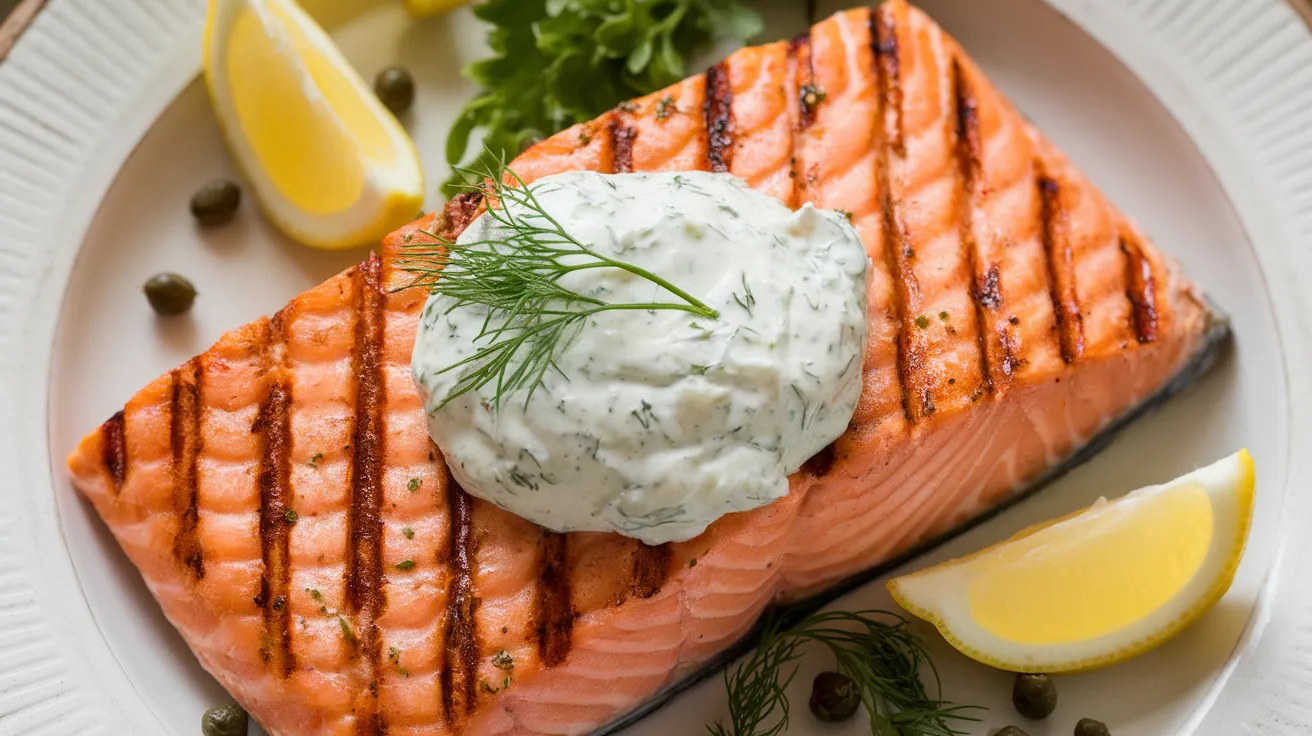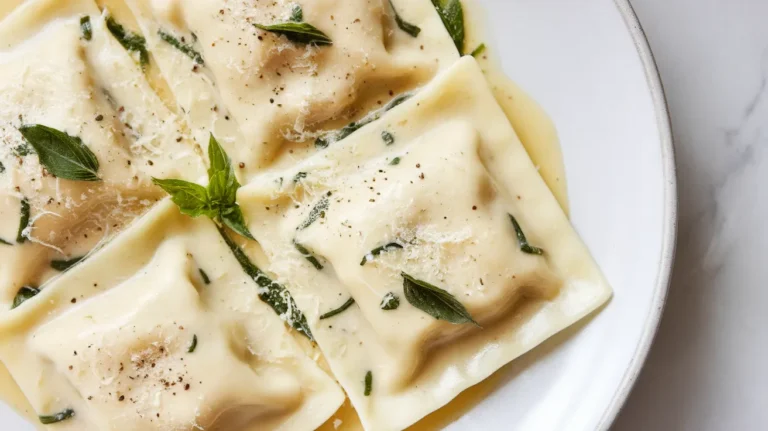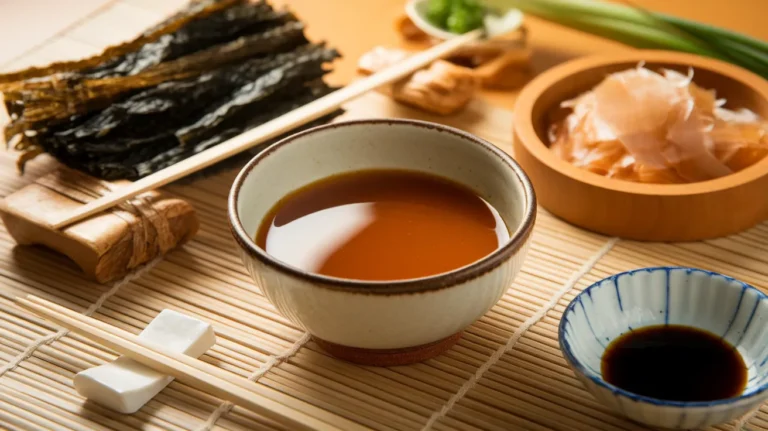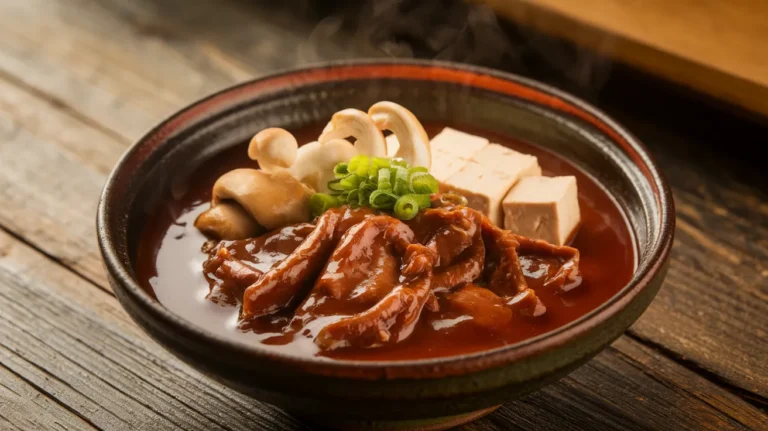This incredible sauce for grilled salmon combines fresh herbs, creamy textures, and bright citrus to create the ultimate companion for your grilled fish. Our foolproof sauce for grilled salmon recipe ensures restaurant-quality results every single time, making your backyard barbecue shine.
RECIPE INFO
SERVES: 4 | PREP: 20 MIN | COOK: 15 MIN | TOTAL: 35 MIN
INGREDIENTS
For the Creamy Herb Sauce for Grilled Salmon
| Ingredient | Amount |
|---|---|
| Fresh lemon juice | 3 tablespoons |
| Lemon zest | 1 tablespoon |
| Greek yogurt (plain, full-fat) | 1/2 cup |
| Mayonnaise | 1/4 cup |
| Fresh dill (chopped) | 2 tablespoons |
| Fresh parsley (chopped) | 2 tablespoons |
| Garlic cloves (minced) | 2 medium |
| Dijon mustard | 1 teaspoon |
| Olive oil (extra virgin) | 2 tablespoons |
| Capers (drained) | 1 tablespoon |
| Salt | 1/2 teaspoon |
| Black pepper (freshly ground) | 1/4 teaspoon |
For the Grilled Salmon
| Ingredient | Amount |
|---|---|
| Salmon fillets (6 oz each) | 4 pieces |
| Olive oil | 2 tablespoons |
| Salt | 1 teaspoon |
| Black pepper | 1/2 teaspoon |
DETAILED STEP-BY-STEP INSTRUCTIONS FOR BEGINNERS
Phase 1: Preparing Your Sauce for Grilled Salmon (15 minutes)
- Set up your workspace properly. Clear a clean counter space near your sink. Gather all ingredients, a medium mixing bowl, measuring cups, a whisk, and a cutting board. Having everything ready prevents mistakes and makes cooking smoother.
- Bring dairy ingredients to room temperature. Remove Greek yogurt and mayonnaise from the refrigerator 20 minutes before starting. Cold dairy can cause your sauce for grilled salmon to separate or become lumpy. Set them on your counter while you prep other ingredients.
- Prepare your lemon correctly. Wash the lemon thoroughly under cool water and pat dry. Using a microplane grater (or the smallest holes on a box grater), carefully zest the lemon by moving it in one direction only. Stop when you see white pith – it tastes bitter. You need exactly 1 tablespoon of bright yellow zest.
- Extract fresh lemon juice. Cut your zested lemon in half. Roll each half on the counter while pressing down – this breaks internal membranes and releases more juice. Squeeze over a small bowl, using your other hand to catch seeds. Strain if needed to remove pulp. You need 3 tablespoons of fresh juice.
- Prepare fresh herbs like a pro. Rinse dill and parsley under cold water, then pat completely dry with paper towels. Remove thick stems from parsley. Using a sharp knife, chop herbs finely by rocking the blade back and forth. Measure exactly 2 tablespoons of each herb – too much makes the sauce overwhelmingly herby.
- Mince garlic properly. Peel 2 garlic cloves by crushing them lightly with the flat side of your knife – skins slip off easily. Remove any green centers (they’re bitter). Mince finely using a rocking motion with your knife. You want tiny, uniform pieces that won’t overpower any single bite.
- Create the creamy base foundation. In your medium bowl, add Greek yogurt, mayonnaise, and Dijon mustard. Using a whisk, stir in figure-8 motions until completely smooth. No streaks or lumps should remain – this takes about 30 seconds of steady whisking.
- Incorporate aromatics carefully. Add minced garlic, chopped dill, and parsley to your creamy base. Fold gently with a spoon or spatula rather than whisking aggressively. You want to distribute herbs evenly without breaking them down too much.
- Add acid gradually for perfect texture. Pour lemon juice in slowly while whisking constantly. Add about 1 tablespoon at a time, whisking after each addition. This prevents the dairy from curdling and creates a smooth, creamy consistency throughout your sauce for grilled salmon.
- Emulsify with olive oil. While whisking continuously, drizzle olive oil in a very thin stream – almost drop by drop at first. This creates a stable emulsion that won’t separate. The sauce should become silky and slightly thickened when done correctly.
- Season and balance flavors. Add salt, pepper, lemon zest, and drained capers. Stir gently to combine. Taste with a clean spoon and adjust – you might need more lemon juice for brightness, salt for flavor enhancement, or pepper for subtle heat.
- Let flavors develop. Cover your completed sauce for grilled salmon with plastic wrap and refrigerate for at least 30 minutes. This resting time allows all flavors to meld together beautifully.
Phase 2: Preparing Salmon for Grilling (10 minutes)
- Inspect and prepare salmon fillets. Check each fillet for pin bones by running your finger along the flesh – remove any with tweezers or needle-nose pliers. Look for skin that’s silver and shiny, flesh that’s firm and bright pink. Avoid any pieces with brown spots or fishy odors.
- Dry salmon thoroughly for better searing. Pat each fillet completely dry using paper towels. Press gently but firmly on both sides and edges. Moisture is the enemy of good grill marks – wet fish steams instead of searing properly.
- Oil and season strategically. Brush both sides of each fillet with olive oil using a pastry brush or your fingers. The oil should coat evenly but not pool. Season immediately with salt and pepper, pressing gently so seasonings stick to the oiled surface.
- Allow proper temperature equilibrium. Let seasoned salmon sit at room temperature for 10-15 minutes before grilling. Cold fish from the refrigerator cooks unevenly – hot outside, cold center. Room temperature fish cooks evenly throughout.
Phase 3: Grilling Salmon to Perfection (15 minutes)
- Prepare your grill properly. Clean grill grates thoroughly with a grill brush while they’re still warm from preheating. Heat grill to medium-high (about 400-450°F). You should be able to hold your hand 5 inches above grates for only 3-4 seconds.
- Oil grates to prevent sticking. Fold paper towels into a small square, dip in vegetable oil, and use tongs to rub across clean grates. Do this just before cooking – too early and oil burns off, too late and fish sticks.
- Place salmon strategically on grill. Lay fillets presentation-side down first (the side you want to look perfect on the plate). Place them diagonally across grate marks for attractive crosshatch patterns. Don’t overcrowd – leave 2 inches between pieces.
- Resist the urge to move or flip early. Let salmon cook undisturbed for 4-5 minutes. You’ll hear gentle sizzling – that’s good! The fish will release naturally when properly seared. If it sticks when you try to lift it, wait another minute.
- Check for proper searing before flipping. Lift one corner gently with a spatula. You should see golden-brown grill marks and the fish should release easily. The cooked portion should be opaque about 1/3 up from the bottom.
- Flip with confidence and care. Using a wide spatula, flip each fillet quickly and confidently. Don’t hesitate or the fish might break. Cook skin-side down for 3-4 minutes more, depending on thickness.
- Test for perfect doneness. Insert an instant-read thermometer into the thickest part of the fillet. Remove at 140°F – carryover cooking will bring it to the perfect 145°F. The flesh should be opaque throughout with just a hint of translucency in the center.
- Rest before serving for optimal texture. Transfer grilled salmon to a clean plate and let rest for 2-3 minutes. This allows juices to redistribute, ensuring moist, flaky fish that won’t fall apart when you cut it.
CHEF’S NOTES
• Perfect timing: Make your sauce for grilled salmon up to 4 hours ahead – the flavors actually improve with time as herbs infuse the creamy base.
• Herb flexibility: Fresh basil or chives work beautifully in place of dill, giving your sauce completely different flavor profiles while maintaining that fresh, bright character.
• Consistency control: If your sauce seems too thick after chilling, whisk in lemon juice 1 teaspoon at a time. Too thin? Add more Greek yogurt gradually.
• Alternative cooking methods: This sauce for grilled salmon pairs equally well with pan-seared, baked, or broiled salmon when outdoor grilling isn’t possible.
NUTRITION (Per Serving)
- Calories: 350
- Protein: 36g
- Carbohydrates: 5g
- Fat: 21g
- Fiber: 1g
- Sodium: 490mg
DELICIOUS SAUCE FOR GRILLED SALMON VARIATIONS
Mediterranean Herb Version
Replace dill with fresh oregano and add chopped sun-dried tomatoes. This bold variation creates flavors similar to our sauce for ahi tuna steaks with Mediterranean flair.
Spicy Jalapeño Style
Add 1 finely minced jalapeño and 1/4 teaspoon smoked paprika for heat lovers who want their sauce for grilled salmon with a spicy kick that complements smoky grill flavors.
Asian-Inspired Fusion
Substitute rice vinegar for lemon juice and add 1 teaspoon sesame oil plus chopped green onions for an East-meets-West flavor profile.
Creamy Avocado Enhanced
Mash 1 ripe avocado into the base for extra richness and healthy fats. This variation works beautifully with other fish too, much like our sauce for haddock fish recipe.
STORAGE & REHEATING
Refrigerator Storage: Keep your sauce for grilled salmon covered for up to 5 days. Natural separation may occur – simply stir gently before serving.
Freezing Guidelines: Not recommended due to dairy content. Greek yogurt and mayonnaise change texture significantly when frozen and thawed.
Leftover Salmon: Store grilled salmon separately for up to 3 days. Serve cold in salads or gently reheat in 300°F oven for 8-10 minutes.
Optimal Serving Temperature: This sauce tastes best at room temperature. Remove from refrigerator 15-20 minutes before serving for peak flavor.
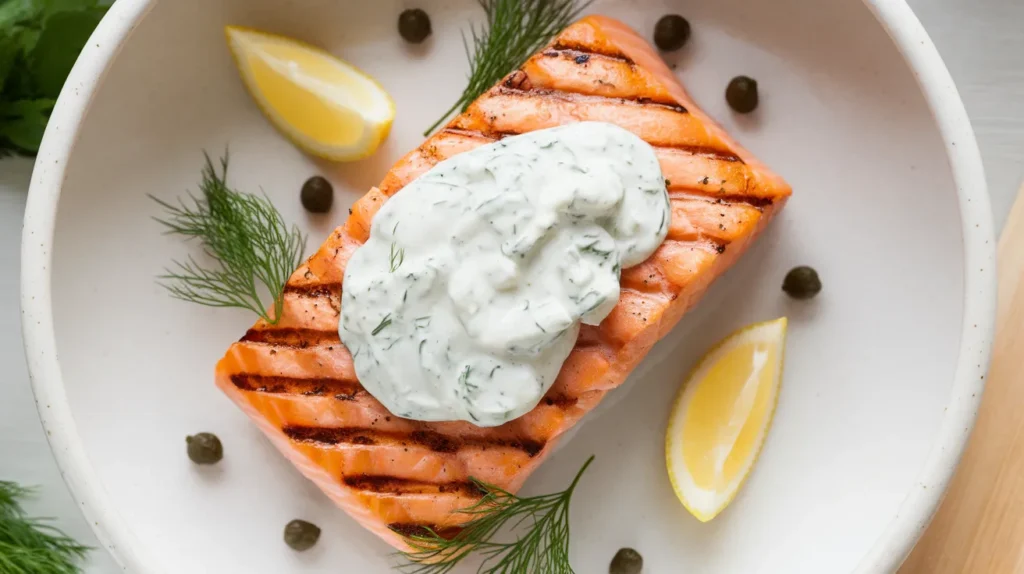
TROUBLESHOOTING YOUR SAUCE FOR GRILLED SALMON
Problem: Sauce appears curdled or separated Solution: Usually caused by cold ingredients or adding acid too quickly. Whisk in 1 tablespoon warm water gradually, then 1 teaspoon olive oil until smooth returns.
Problem: Sauce tastes too tangy or acidic Solution: Balance excess acidity by whisking in more Greek yogurt or adding a tiny pinch of sugar to mellow sharp lemon flavors.
Problem: Salmon sticks stubbornly to grill grates Solution: Ensure grates are completely clean, properly oiled, and at correct temperature. Don’t attempt flipping until fish releases naturally.
Problem: Sauce consistency is too thick after chilling Solution: Thin gradually with fresh lemon juice or olive oil, whisking constantly to maintain proper emulsion without breaking.
Problem: Fish appears overcooked and feels dry Solution: Next time, remove salmon at 140°F internal temperature. Residual heat brings it to perfect 145°F without overcooking.
EQUIPMENT ESSENTIALS
• Instant-read thermometer – Critical for perfect doneness every time • Microplane grater – Creates fine, aromatic lemon zest • Medium mixing bowl – Adequate space for whisking without splashing
• Wire whisk – Essential for smooth, lump-free sauce texture • Grill brush – Clean grates absolutely prevent sticking issues • Wide spatula – Makes flipping delicate fish much easier
ORGANIZED SHOPPING LIST
Dairy Section
- Greek yogurt (plain, full-fat, 32 oz container)
- Mayonnaise (quality brand for best flavor)
Fresh Herbs & Produce
- Fresh dill (1 package)
- Fresh parsley (1 bunch)
- Large lemons (2 pieces for juice and zest)
- Fresh garlic (1 bulb)
Pantry Staples
- Dijon mustard
- Capers (small jar)
- Extra virgin olive oil
- Sea salt and black peppercorns
Fresh Seafood Counter
- Salmon fillets (4 pieces, 6 oz each, skin-on preferred)
SUCCESS SECRETS FOR PERFECT SAUCE FOR GRILLED SALMON
- Temperature precision wins every time. Invest in a quality instant-read thermometer – guessing salmon doneness leads to disappointment and dry, overcooked fish.
- Patience during resting periods pays off. Both your sauce for grilled salmon and the cooked fish benefit from proper resting time to develop optimal flavors and textures.
- Fresh herbs make all the difference. Dried herbs simply cannot provide the bright, vibrant taste that fresh dill and parsley bring to this sauce recipe.
- Proper grate preparation prevents disasters. Take time to clean and oil your grill grates correctly – this single step prevents most grilling problems.
- Trust the cooking process completely. Resist the urge to move or flip salmon too early – proper searing requires patience but delivers restaurant-quality results every time.
This comprehensive sauce for grilled salmon recipe transforms ordinary backyard grilling into an extraordinary dining experience. The creamy, herb-packed sauce perfectly balances salmon’s rich flavor while adding sophisticated restaurant-style appeal that impresses family and guests alike.
